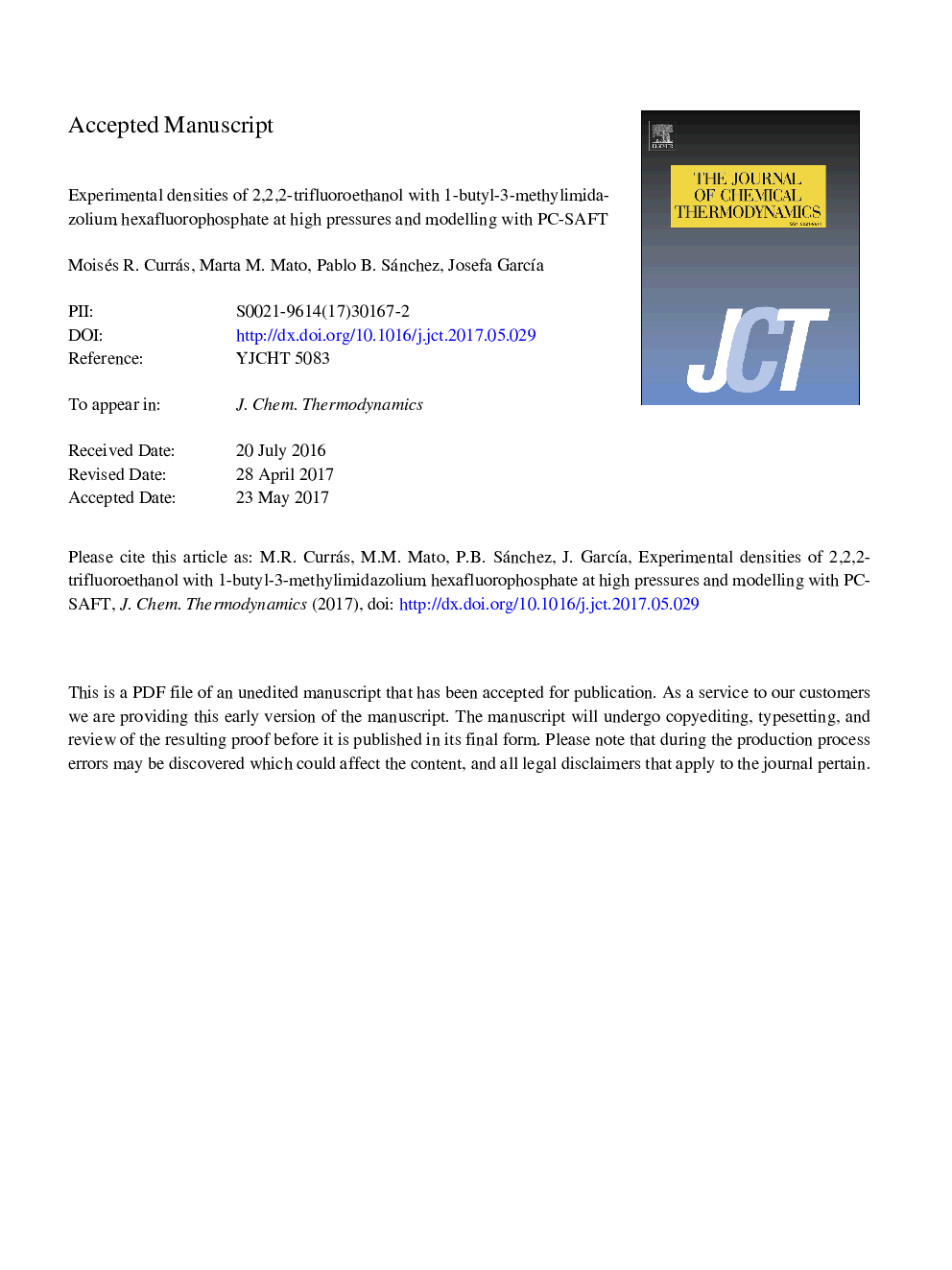| Article ID | Journal | Published Year | Pages | File Type |
|---|---|---|---|---|
| 4907231 | The Journal of Chemical Thermodynamics | 2017 | 44 Pages |
Abstract
New data of densities at temperatures in the 288.15-333.15 K range and several pressures, up to 40 MPa, have been measured for 2,2,2-trifluoroethanol + 1-butyl-3-methylimidazolium hexafluorophosphate system using a vibrating tube densimeter. The combined expanded uncertainty at the 0.95 confidence level in the density measurements is 2 kg·mâ3. Excess molar volumes, VmE, and apparent molar volumes, VÏ, were determined from the density values of the pure compounds and mixtures. The influence of the temperature, pressure and composition on VmE, VÏ, was studied. In general, the dependence of VmE with the mole fraction is sigmoid showing that there is a competition between the breaking and formation of interactions and the packing effect; VÏ was represented using the Redlich-Mayer equation, indicating that hydrogen bonding interactions are inexistent or scarce. Derived properties, κT and αp were calculated from the analytical differentiation of the Tait equation, and it was observed that the variation with pressure and temperature is very small for 1-butyl-3-methylimidazolium hexafluorophosphate. In addition, PC-SAFT parameters of 1-butyl-3-methylimidazolium hexafluorophosphate were optimized using density data at atmospheric pressure. From PC-SAFT, pVT behaviour was reasonably well predicted with an average relative deviation of 3.1%, whereas sigmoid behaviour of excess molar volumes is not represented by the model.
Keywords
Related Topics
Physical Sciences and Engineering
Chemical Engineering
Chemical Engineering (General)
Authors
Moisés R. Currás, Marta M. Mato, Pablo B. Sánchez, Josefa GarcÃa,
